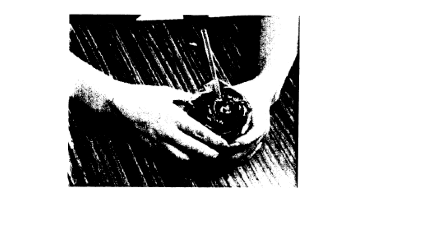
AJ Park patent specialists Anton Blijlevens and Jillian Lim touch on some of the interesting patents to look out for on the shelves.
Medicated contact lenses
Eye medicine is most commonly administered via eye drops, but it is not very effective because delivery of the medicine is not sustained. There is initially a transient overdose, followed by a relatively short period of effective therapy, and then a prolonged period of underdose, assuming that the patient even remembers to apply the drops.
The concept of delivering drugs through contact lenses has been explored over the last 50 years or so, but has only recently been successfully proven to deliver sufficiently sustained release of the drug. The associated patent, US 8414912, was granted to the Massachusetts Institute Of Technology, the Children’s Medical Center Corporation, and the Massachusetts Eye And Ear Infirmary earlier this year.
The patent covers a contact lens with a continuous drug releasing zone which is encapsulated by the lens material and surrounds the optical pathway of the lens. The patent also covers a contact lens with a hydrogel lens material encapsulating a drug-containing polymer film, and which provides zero-order release of the drug (that is, a linear concentration over time), or a therapeutically effective release of the drug, over at least 1 week.
The patent describes many examples and design alternatives, such as features which allow directional control over the release of the drug, through micro-perforations, or variations in thickness or permeability of specific regions of the lens. In another example, the lens has a triple layered structure, with the lower and upper layers having a low drug concentration, and the middle layer having a high drug concentration. This means that the lens holds a large amount of drug, but has a low surface permeability, so that release of the drug is prolonged.
The next generation of food processors
Blenders are so passé; what you need is a shockwave generator to pulverise your food. Just wrap the food item in cling wrap, put it into a tank of water, and apply a shockwave – by exploding an explosive, applying an electrical pulse or by “hitting a metallic ball into a liquid”. Depending on the pressure applied, the food item will be softened or juiced without losing any substantial nutrients, and most likely keeping the original shape of the food intact.

This method was recently patented by the National University Corporation Kumamoto University (US 8507024). The patent covers a method of processing fruits and vegetables by applying a pressure between 37 MPa and 53 MPa via a shockwave, which increases the water-soluble pectin in the food and turns the flesh into liquid.
The applicant explains that because the shockwave increases the temperature of the food for only a very short period of time, nutrients are not substantially depleted, compared to traditional methods such as heating, compressing or grinding. Softening occurs because the shock wave (SW) causes a rapid pressure change, which compresses and then expands the food rapidly, rupturing the cell walls in the fruit or vegetable. The photo below shows how the skin of an apple can be kept intact while the inside has essentially been converted to juice.
A patient transfer robot
We associate Toyota Motors with vehicles, but they also have a robotics innovation department.
For example, their recently granted patent, US 8499379, describes a robotic device which helps to move bedridden patients. The robot has an arm which can move in multiple directions, to wedge under the patient’s body, or push against a pillow to help the patient rotate in bed. There is also a stabiliser which attaches to the bed to stabilise the robot while it is lifting or pushing on the patient.
 ?
?
Presumably the general concept of robotic patient transfer devices is known, because this patent specifically claims the robot together with a turning pillow (number 230 in the drawing below). The turning pillow supports just one part of the patient, eg. his legs. This is beneficial for patients who have some mobility in other parts of their body, eg. their arms, so they get to exercise their arms while repositioning themselves with the help of the robot.




